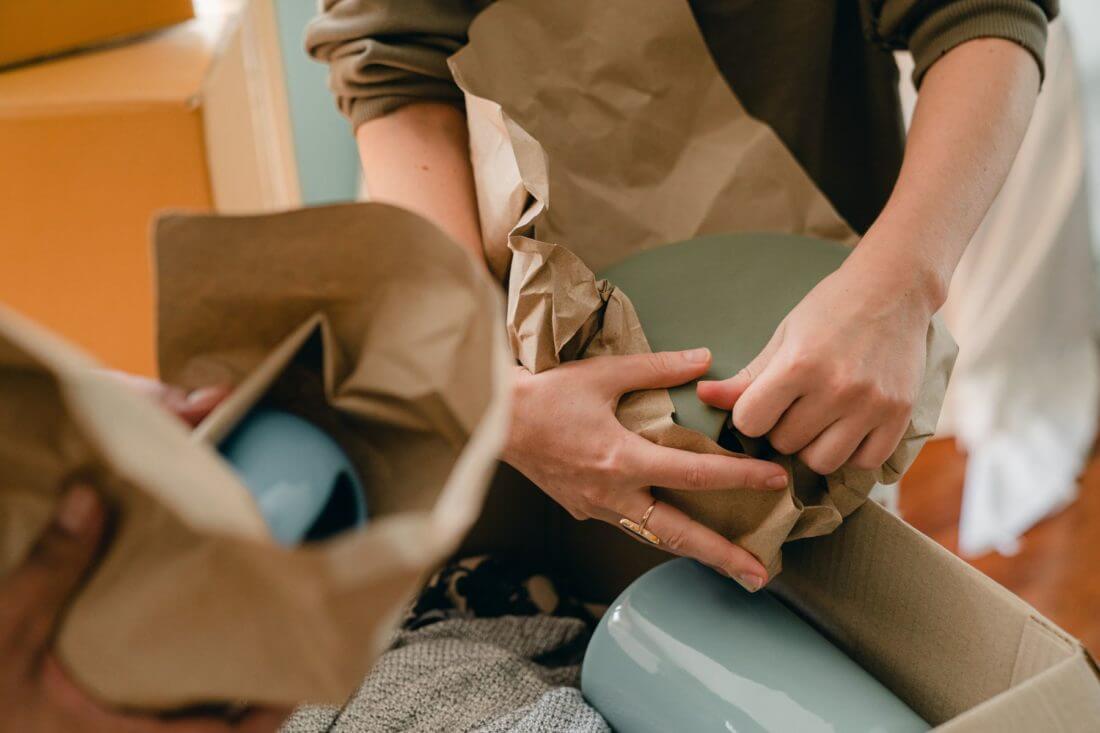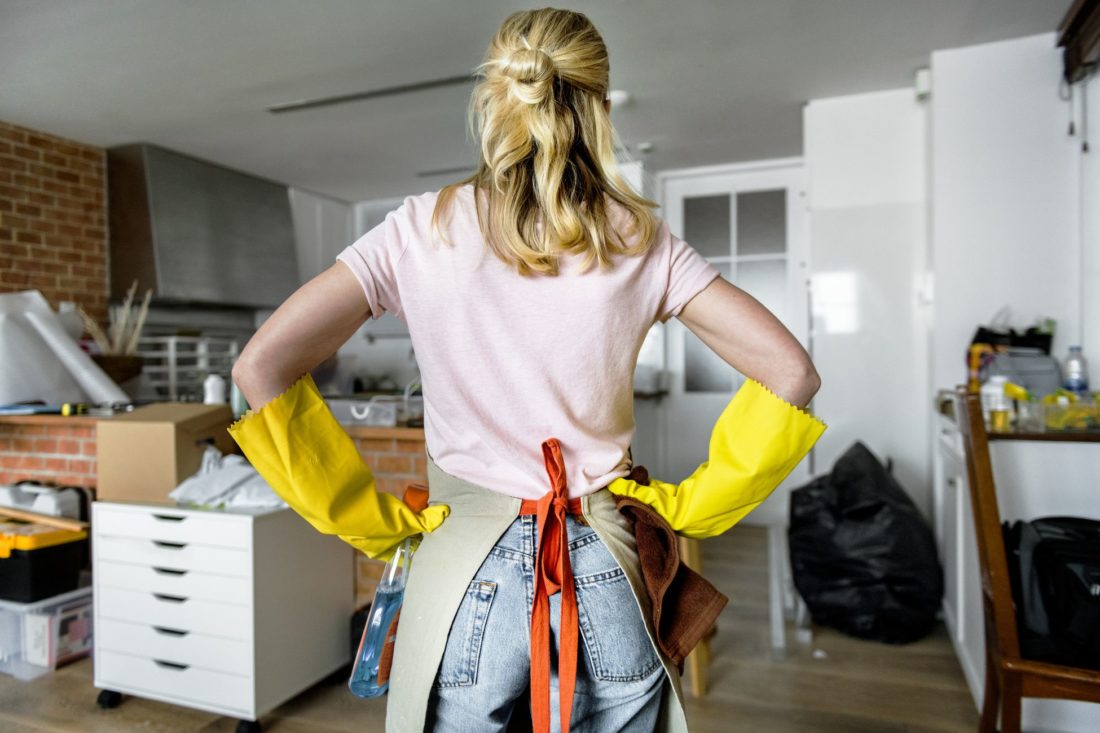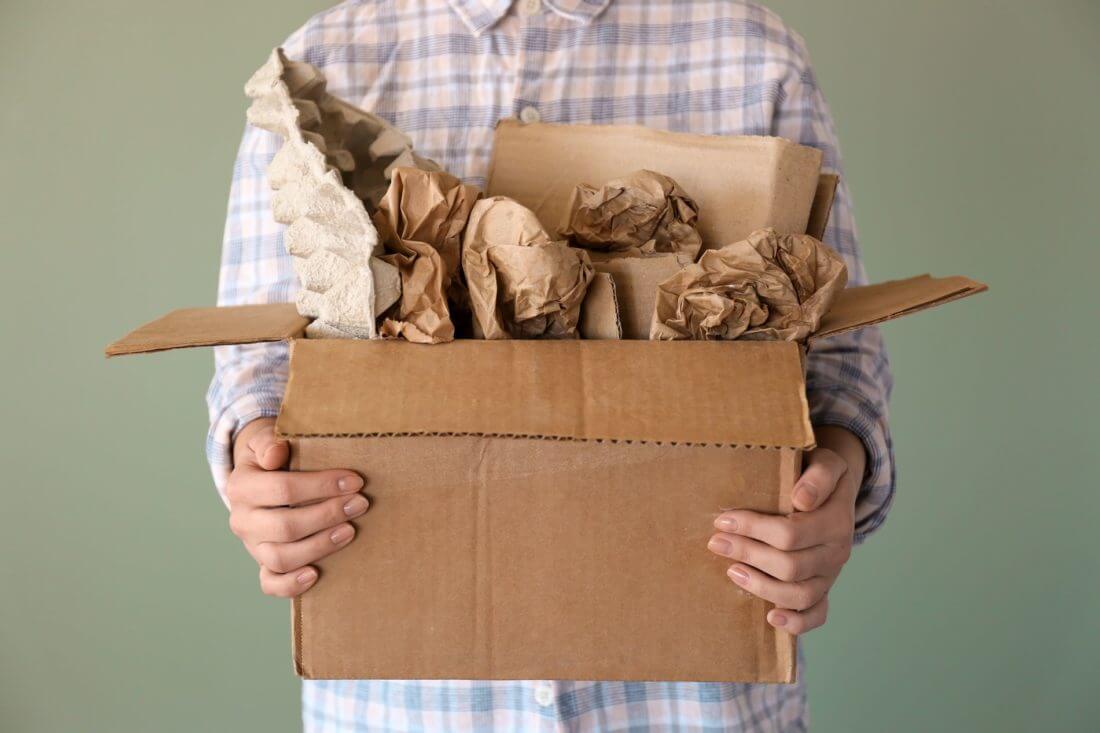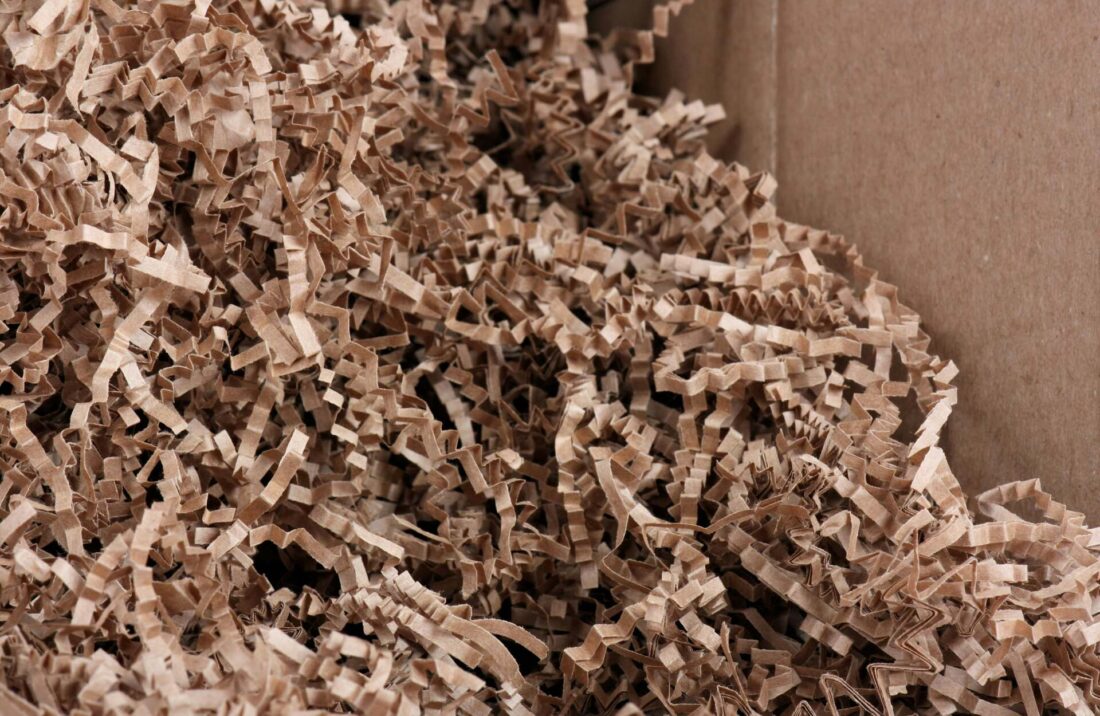Using packing paper for moving is a smart investment, regardless of whether you have to protect a fine china set for transport or cushion a box. As one of the most popular and affordable materials, it has become a staple of every successful relocation.


Whether you choose to pack by yourself or hire a long-distance moving company to do it for you, this is a material that will ensure that your belongings reach your new home in one piece and without a scratch. Using it in combination with other supplies will lead to even better results. Pick up sturdy boxes, duct tape, and some markers – all of these will play a part in ensuring the safety of your things during the shipping process. You also don’t have to wonder “where can I buy packing paper?” since we have hacks ready for you.
Why Do You Need Paper for Long-Distance Moving?
When choosing the right materials for your relocation, you would want to know what they can do for you and how they can protect your belongings. Besides, when creating a moving expenses checklist, you will want to know how much money to put aside for supplies.
If you read the newspaper regularly, then chances are you probably have a bunch of it lying around your home. Those can easily be used as free material in your boxing process. But be aware of the black ink that can rub off onto your items. If you want to avoid staining your things, you should avoid the newspaper altogether.
On the other hand, white sheets fit all of your packaging needs. There will be no ink smudges, and you will be able to wrap anything you want with it. If you have breakable and delicate objects, you can protect them with this material. This is why professional packers use it as an essential supply.


How Much Material Do You Need?
If you plan on hiring cross-country moving services, you won’t have to worry about the necessary supplies and the shipping process in general. But if you are doing it yourself, know that every relocation is different. Knowing the size of your apartment or a house will help you decide how many pounds of paper you need:
- 10 pounds would be enough to box a studio apartment or one-bedroom flat,
- 25 pounds can cover a home with multiple rooms,
- 50 pounds will be enough for a big home and wrapping up delicate collections,
- 100 pounds can cover a six-plus bedroom house or one that has many small items.
Declutter Before Packing
If you want to save some money, you should first make a home inventory, sort things that you want to keep, and those that you wish to get rid of. You can even organize a garage sale and earn some money on the items you don’t need. Basically, the more things you get rid of, the less material you will need, and less money you will spend.
Where to Get Packing Paper Sheets for Free
When you are trying to save up, finding free materials is a great place to start. We’ve already mentioned newspapers as an alternative solution, but whenever possible, try to use durable, high-quality materials.
First thing first, ask your friends that have moved recently if they have some packing tissue paper to give you. After that, take a walk around your neighborhood and find shops that could have free materials that you can use.
No matter what you want to protect, you can probably find sheets of every size you need. Big sheets can be used for covering or wrapping large objects. You can also crop them and use them for smaller objects.


How to Use Packing Paper for Moving?
There are a few ways you can use this material in the process of boxing up your things. Firstly, you can use it to wrap your belongings. The layers you put around your things will serve as protection from external damage.
Also, this supply can be used as a buffer. If you’re packing a mirror or preparing kitchen items for relocation, crumpled paper can serve as an ideal material for cushioning the box. When boxing up dishes, you can use it as padding at the bottom and on the top of the boxes.
Protect Every Product You Want to Ship
In the process of moving, the safety of your items is essential. Using the best supplies will give them the additional protection that they need. Professional long-distance movers bring boxes and packing supplies that fit your objects the best.
But if you are using storage units for keeping some of your belongings, packing them in the right way will protect them from any external factors like moisture and shocks.


Other Types of Materials Every Relocation Requires
Besides white sheets, there are many materials you can use to protect your belongings. If you are obtaining supplies by yourself, remember to get a variety of them.
There are a few types of packaging products that are used in the shipping process:
- Different types and sizes of boxes – these are the bread and butter of every packaging process. Don’t forget to get different sizes so that you can fit all kinds of objects in them. Don’t forget to implement the right packing strategies while you are boxing up your things.
- Plastic wrap can be stretched around objects protecting them from water, moisture, and dirt.
- Tape and markers are crucial parts of boxing up. Sealing boxes and labeling them will provide additional protection, as well as help with the unpacking process.
- Bubble wrap is a widely used material that can absorb hits and raise the level of protection for your things.
Bubble Wrap vs. Paper
Do you have a dilemma about which material to use? They are both essential in the boxing up process, so you can’t go wrong whether you choose bubble wrap or paper. Both will protect your things and keep them safe during the move.


Read Through Reviews and Choose the Best Company to Handle Any Item You Have
When thinking about relocating, consider all the ways a long-distance moving company can assist you in that process. There are some tasks you can do on your own well enough, but when it comes to shipping large and heavy objects or protecting the most fragile belongings, experts have no match.
To pick the right company, you should go online, read through the reviews and find the long-distance moving services that will suit your needs perfectly. You don’t have to worry about where to buy packing paper for moving or how.
With the right cross-country movers, you won’t have to worry about the safety of your belongings. The crew will use only the best materials to box everything up. Call Long Distance USA Movers to help you move quickly and efficiently.
Frequently Asked Questions About Packing Paper for Moving
What Is the Best Way to Use Packing Paper for Moving?
The best way to use packing paper for cross-country moving is to wrap fragile items such as dishes and glasses in small sheets of paper, and then place them inside sturdy cardboard boxes filled with cushioning material like bubble wrap or packing peanuts. Packing paper also can be used to fill empty spaces in boxes and help protect against movement of items while in transit. Additionally, it can be used as a layer between stacked furniture pieces when taped together.
How Much Packing Paper Do I Need for My Move?
It depends on the size of your move. Generally speaking, if you’re moving a few small items, one to two large rolls of packing paper should be enough. For larger moves that involve furniture and other fragile items like glassware or dishes, you may need up to six large rolls. It’s better to have more than not enough.
Can I Recycle or Reuse Packing Paper?
Yes, many types of packing paper are recyclable or can be reused. It is best to check with your local recycling facility or municipality for exact guidelines. If the paper packaging does not contain any type of coating or plastic film, it can usually be recycled in most curbside programs. Reusing paper for packing dishes is also possible such as for wrapping gifts and other items that need protection when being shipped.
How Can I Protect My Fragile Items With Packing Paper?
Protect your fragile items when packing them in boxes by using packing paper to create cushioning and fill empty spaces. Place the item on a sheet of packing wrapping paper and wrap it up tightly, then place it in the box securely with plenty of packing material around it. It is also important to label the box correctly to indicate which items are fragile. This will make sure that your items are adequately protected during transport.
What Are the Alternatives to Using Packing Paper for Moving?
Alternatives to plate and glass wrapping paper include bubble wrap, towels and linens, newspaper, foam peanuts, and air-filled plastic bags. If you’re looking for something more sustainable, there are lots of eco-friendly packing materials you can use such as biodegradable cardboard boxes and recycled paper. You can also find reusable fabric “moving blankets” or quilt pads that can provide extra padding when wrapping furniture or other delicate items.
How Can I Secure Packed Boxes With Packing Paper?
Secure packed boxes with paper by wrapping it around all sides of the box, then taping it tightly. Make sure to cover any gaps or openings and secure all corners, so that the box is completely covered with paper. This will help protect items inside from damage during transportation.
Can I Use Newspaper Instead of Packing Paper for Moving?
No, it’s not recommended to use newspaper instead of packing paper for moving as newspapers may leave ink stains on your items that are difficult to remove. It is best to use bubble wrap, foam padding, and packing paper when preparing your items for moving.
How Do I Pack Clothing and Linens With Packing Paper?
To pack clothing and linens, start by placing a sheet of large paper over the item. Fold the edges of the paper around the item to create a secure wrap. Then, fold up more pieces of smaller packing paper and place them between creases in your clothing or linens to provide extra coverage. Finally, seal everything with tape before storing it in a box or suitcase.
What Are Some Tips for Efficiently Packing With Packing Paper?
- Make sure you have enough paper to cover your items completely,
- Choose a lightweight packaging option such as bubble wrap or newsprint for fragile items like dishes and glassware,
- Wrap individual items in paper to protect them from scratches and dents during transit,
- When wrapping multiple items together, secure the bundle with tape before wrapping it for extra protection and stability during transit,
- Use foam sheets or airbags around corners of fragile or oddly-shaped items for added cushioning protection,
- Label all boxes clearly, including which side is up, to prevent damaging your packed belongings while transporting them to their destination.
How Can I Dispose of Excess Packing Paper After My Move?
The best way to dispose of excess packing paper is to recycle it. Most local recycling centers accept cardboard boxes, newspapers, and other paper products for recycling. You can also compost paper if it has not been treated with chemicals or adhesives. You may also be able to donate your extra packing supplies to a reuse center or charity organization, if available in your area.





